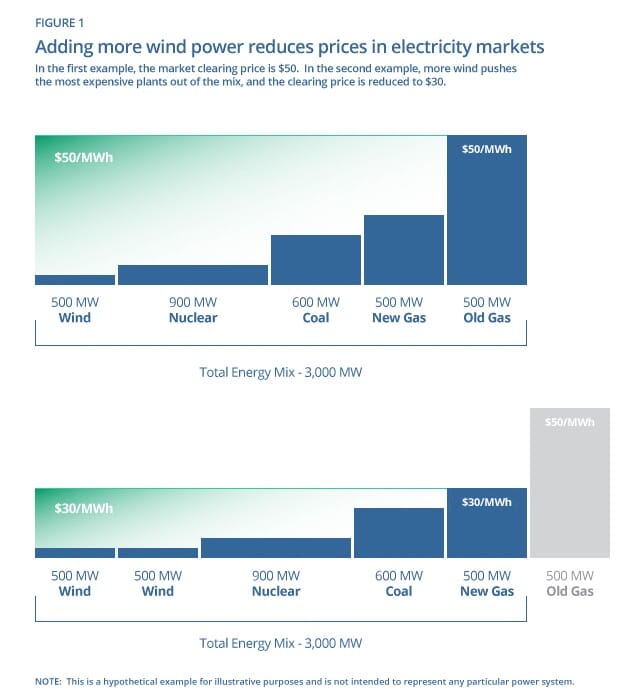Our Independence
Wind power will stabilize electricity rates
More wind available to the New England grid helps to stabilize electricity rates in two ways. The higher cost generators that would otherwise set the price for the entire market on a given day are reduced, allowing a lower price in the auction to determine electricity rates. As more renewable energy projects are developed, the demand for fossil fuels will begin to stabilize instead of continuing to outpace supply. The law of supply and demand dictates that this will keep prices from continuing to grow as supply inevitably dwindles. Wind projects in Maine are already helping to stabilize electricity rates through long term contracts with price ceilings.
Wind power can reduce rates
A recent study for ISO-NE found that when wind produces 24% of the electricity available on the grid, rates will be reduced between $50 and $54 per MWH, which is equivalent to direct savings of nearly $1 billion.
Wind power helps reduce Maine’s over-reliance on natural gas
Maine currently gets nearly half of its electricity from natural gas. This makes us vulnerable to price spikes and shortages in a commodity sourced outside Maine. Wind power is hedge against supply disruptions and price volatility.
Wind power could provide nearly 25% of the region’s electricity
ISO-NE recently completed a study on integrating wind power into their system. The report states, “New England could potentially integrate wind resources to meet up to 24% of the region’s total annual electrical needs in 2020...”. As this percentage grows, homegrown wind power can help mitigate the impacts of disruptions in other generation as it recently has in Texas and Japan.
Electricity generated by wind displaces fossil fuel electricity one-to-one
Electrical grids must maintain a constant balance between supply and demand. Think of the demand as a bathtub that needs to be filled at all times. If wind power and other zero-fuel-cost generators (like hydro, solar, and tidal) are the water in the tub then fossil based generators that have a fuel cost would be the oil that floats on the surface. The more renewables, the more oil (fossil fuel generation) spills out of the tub.

